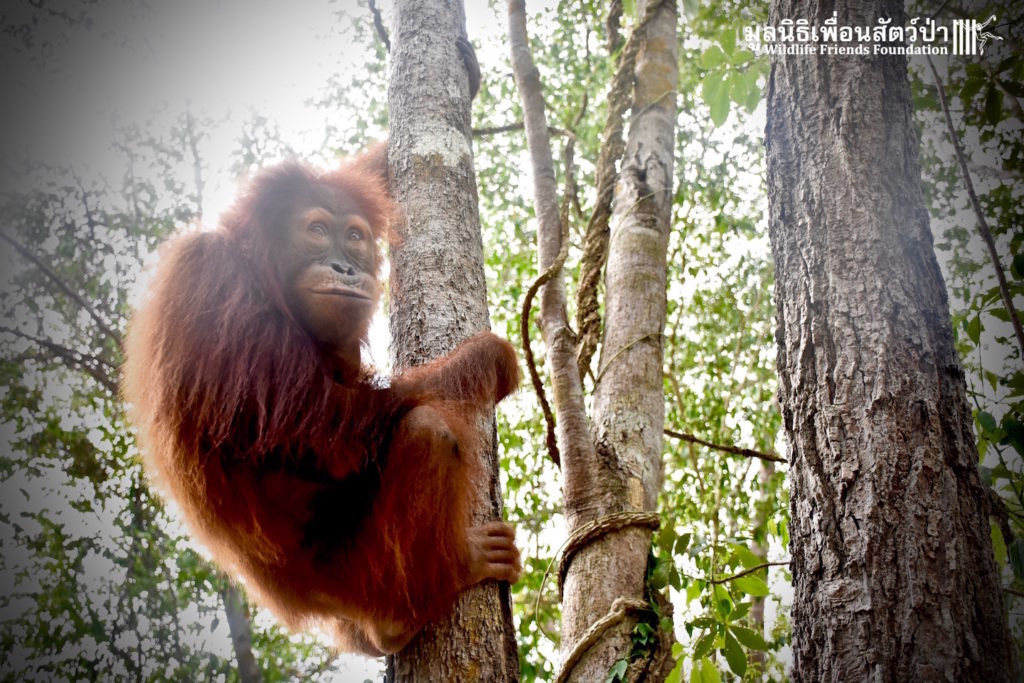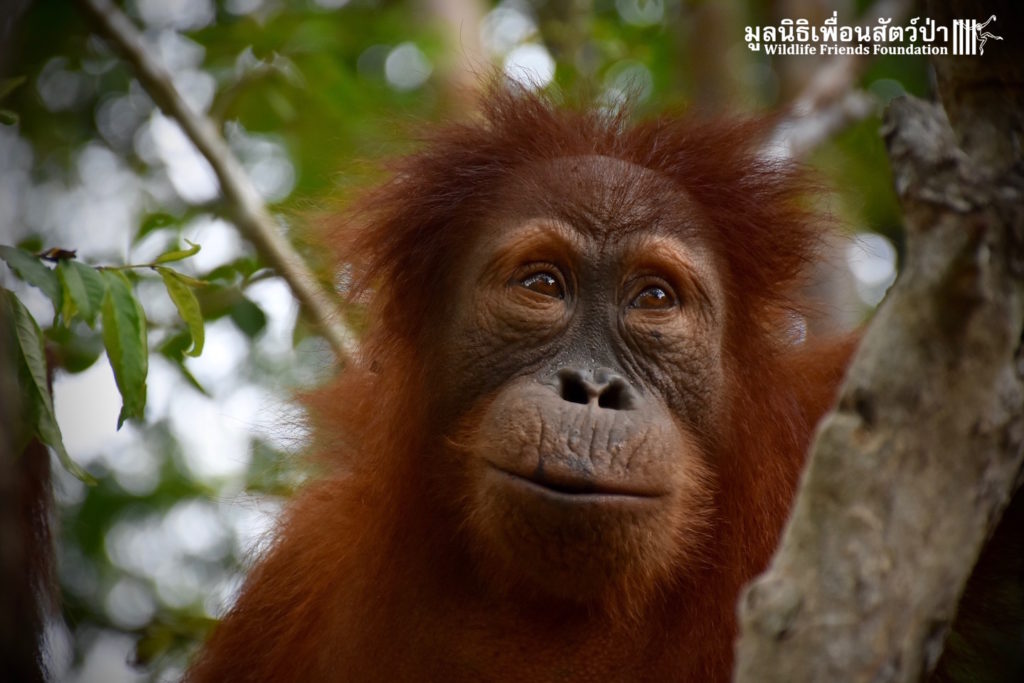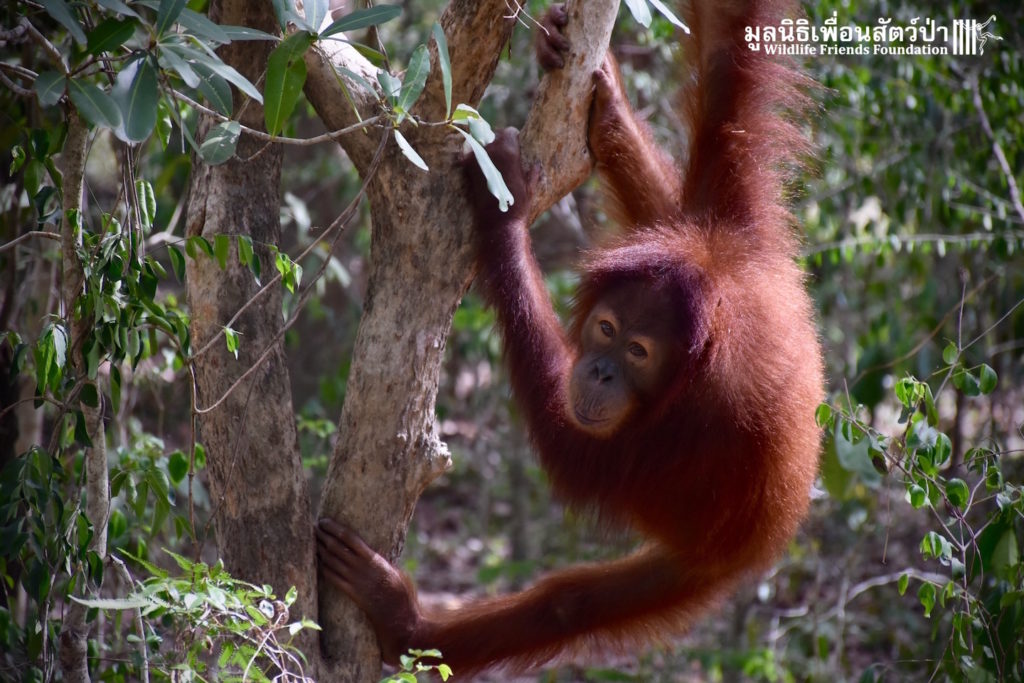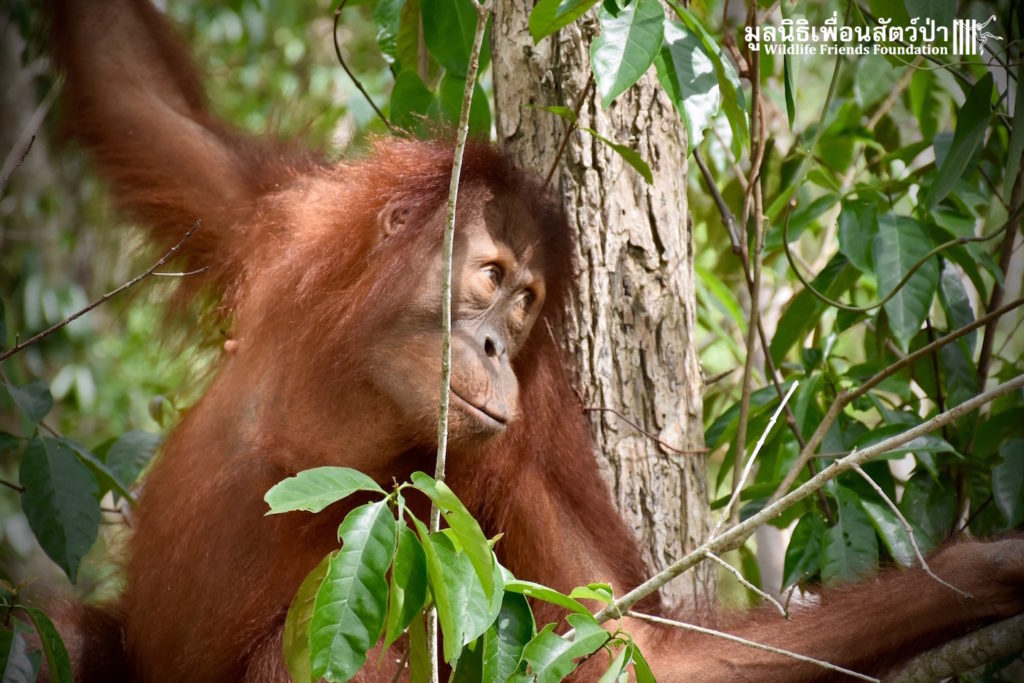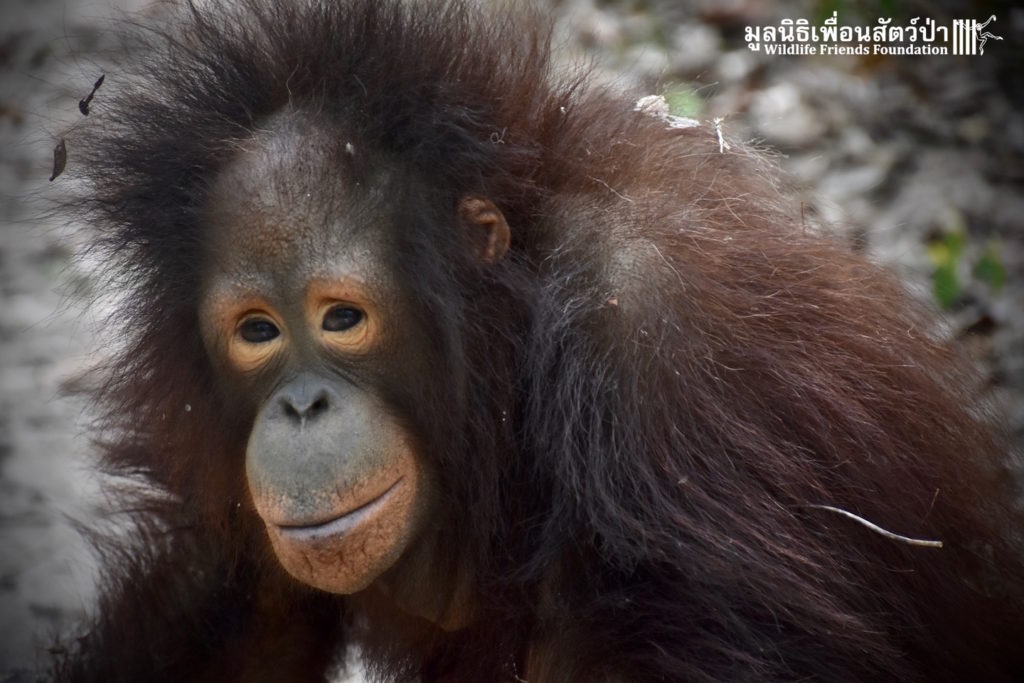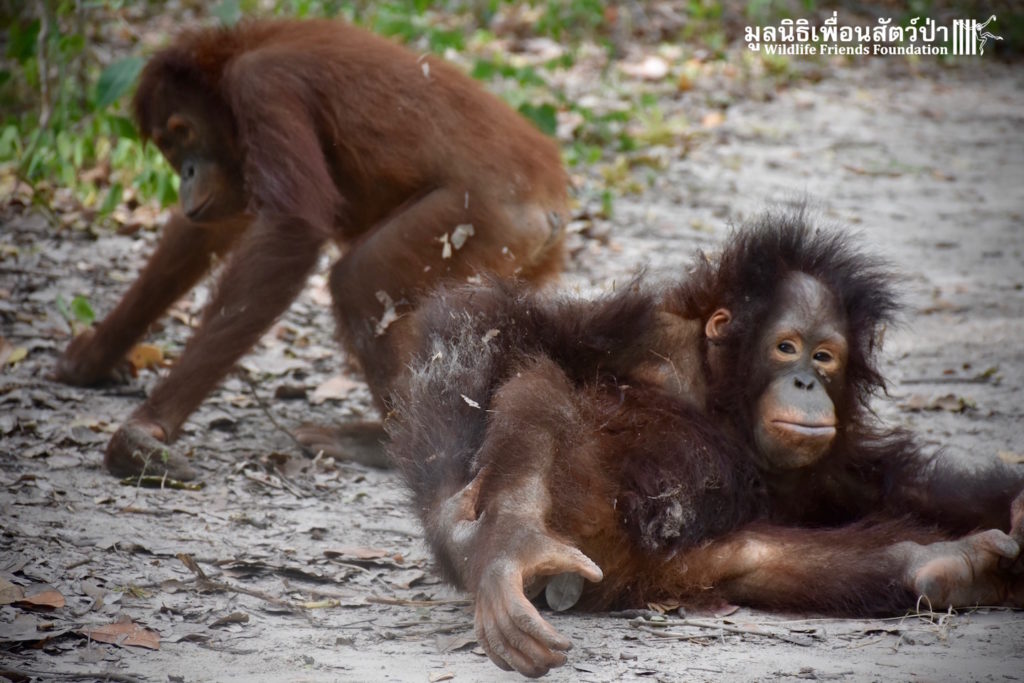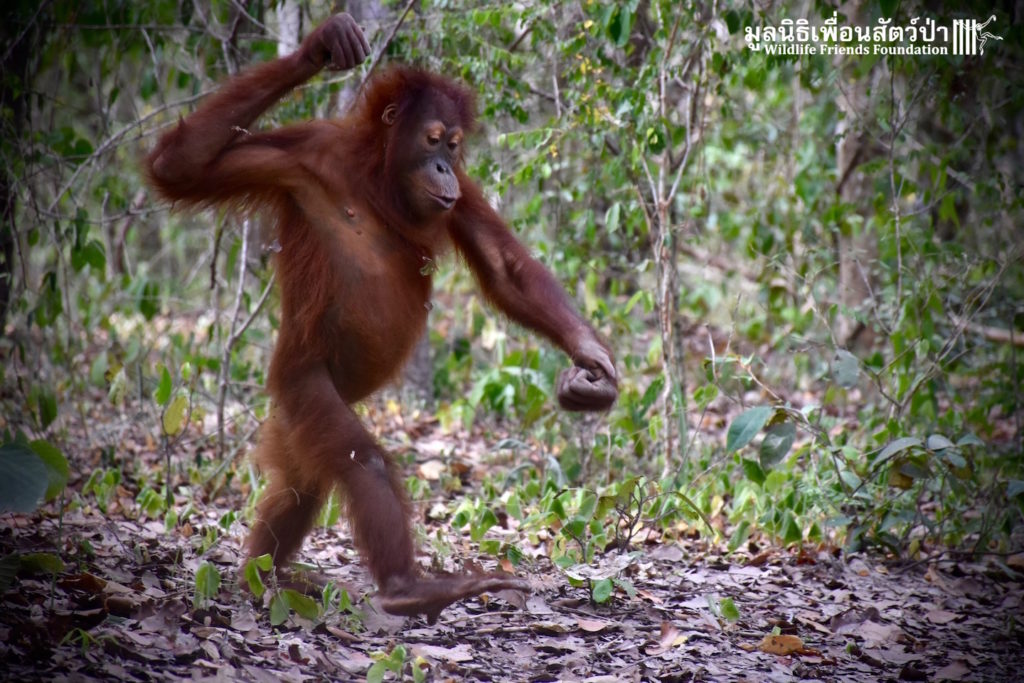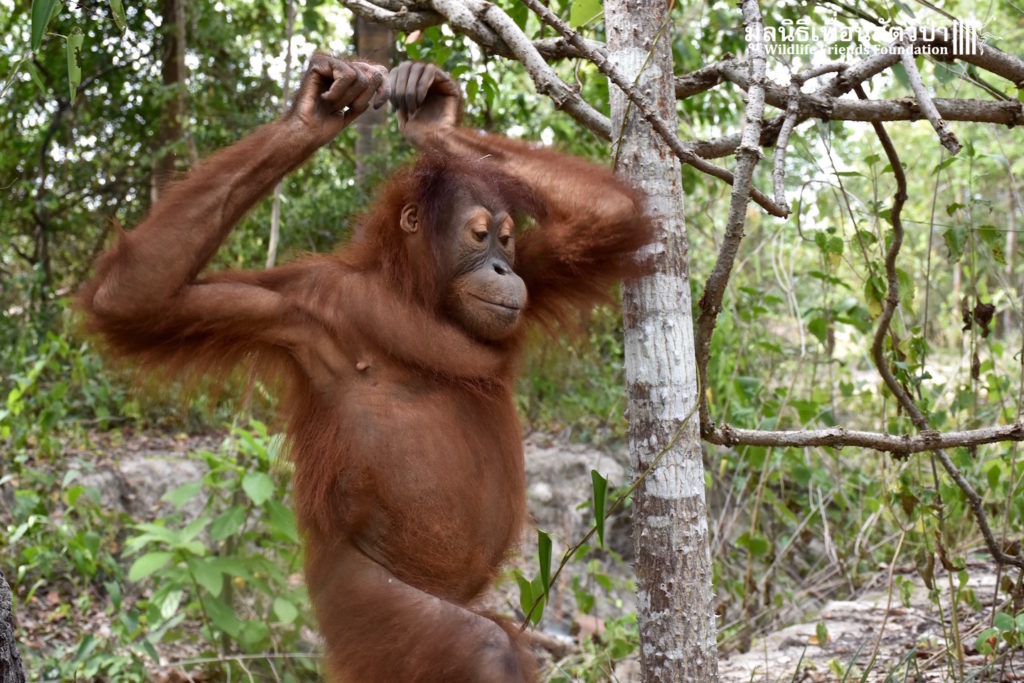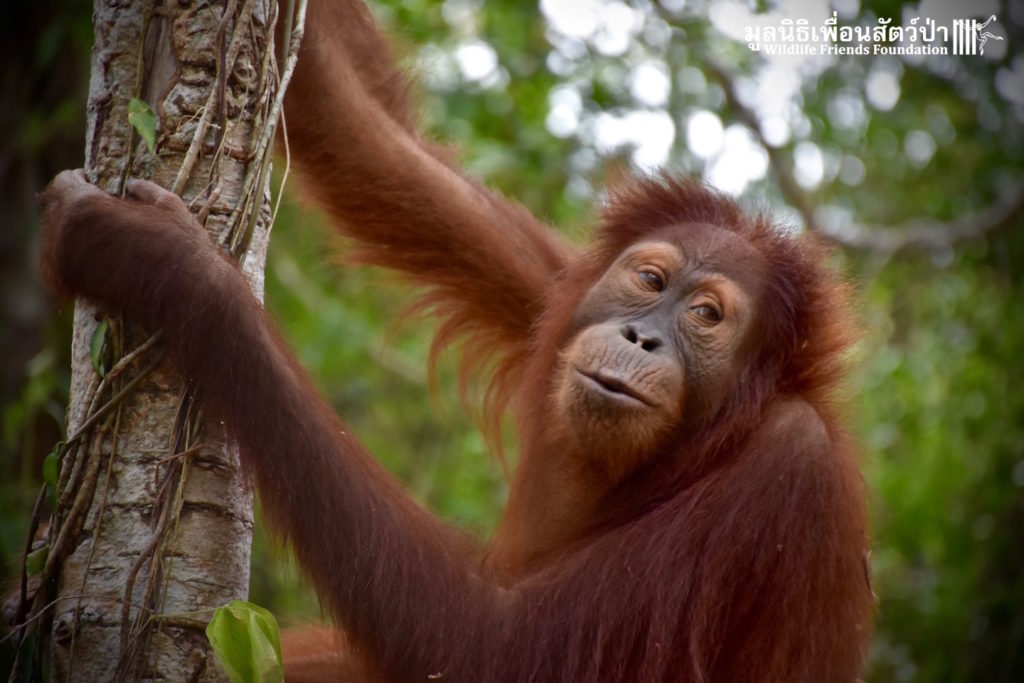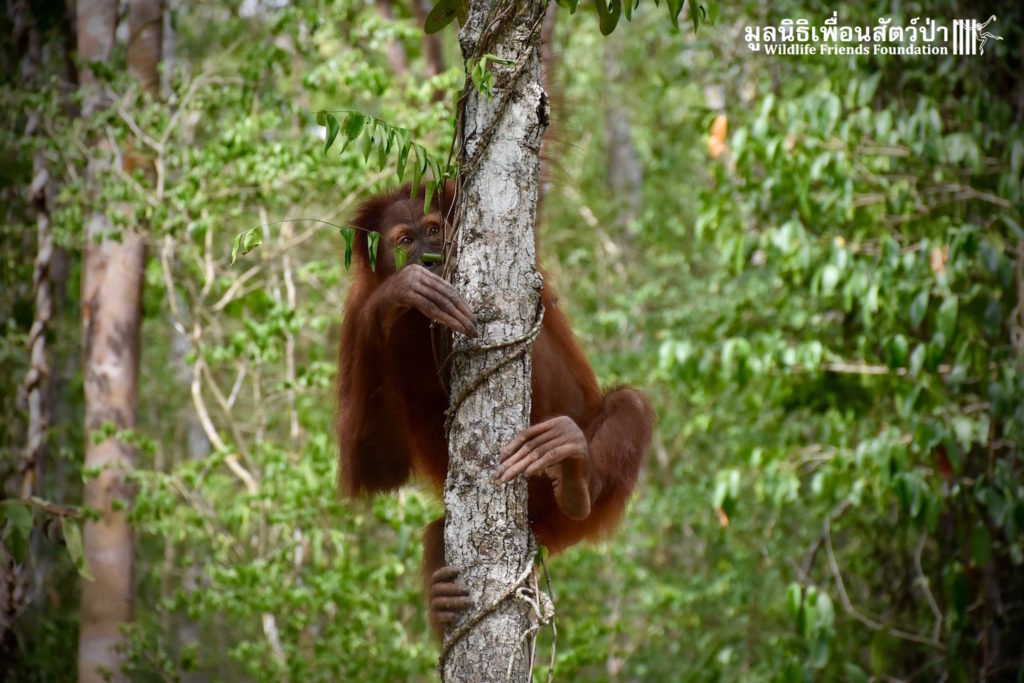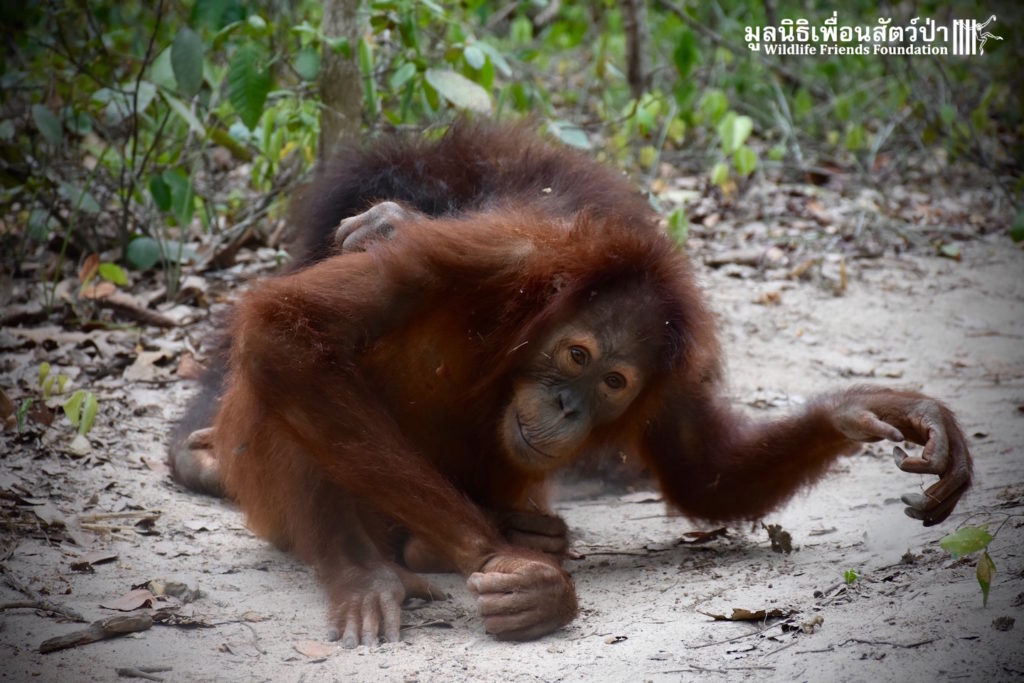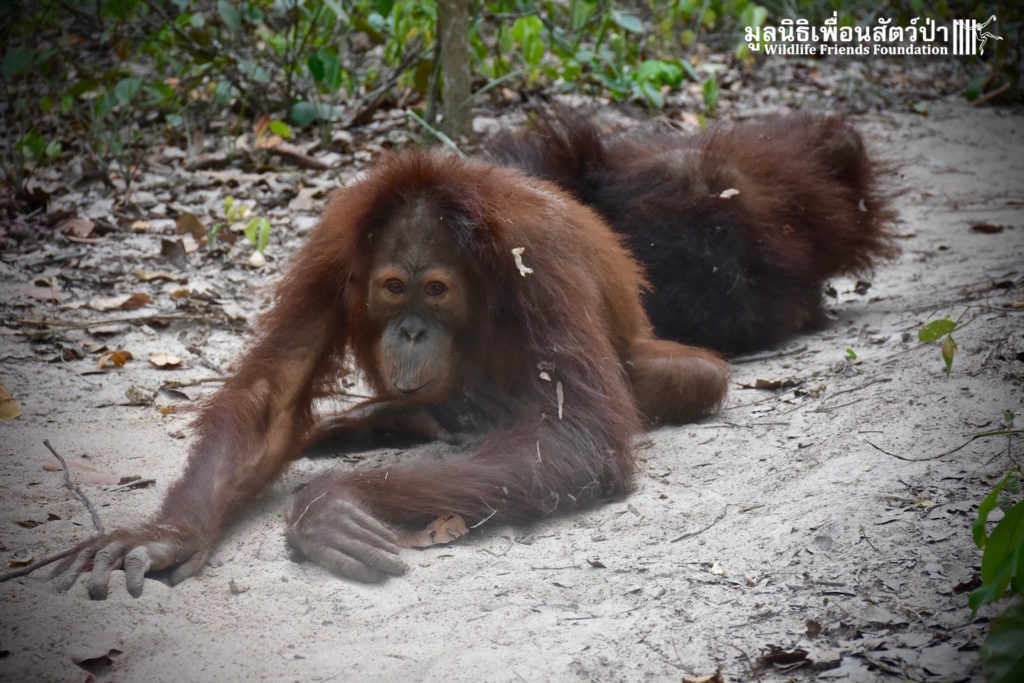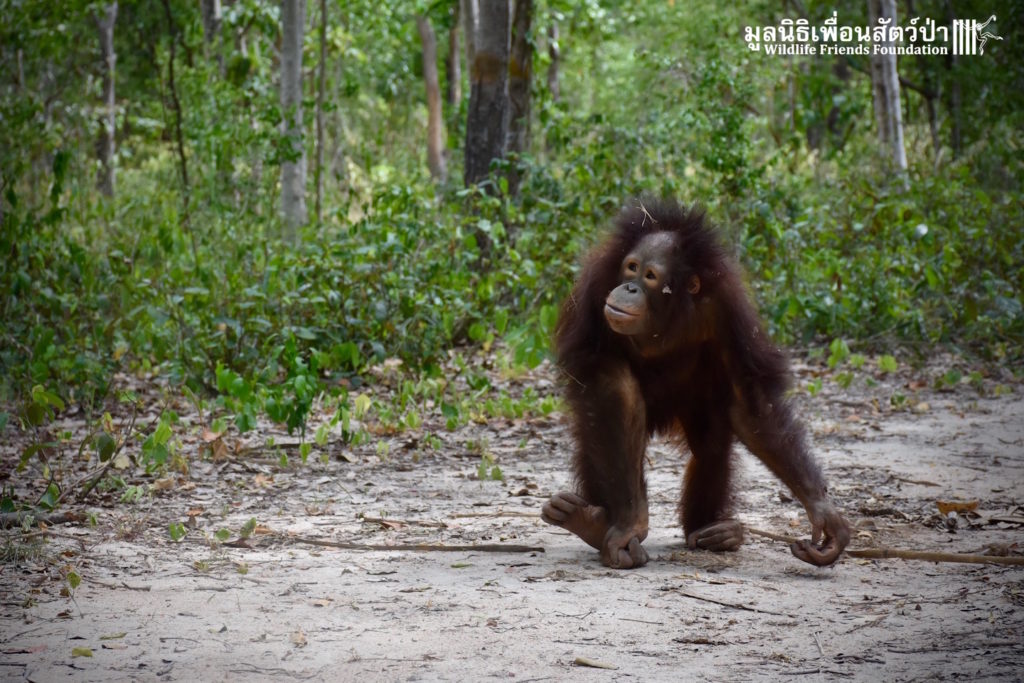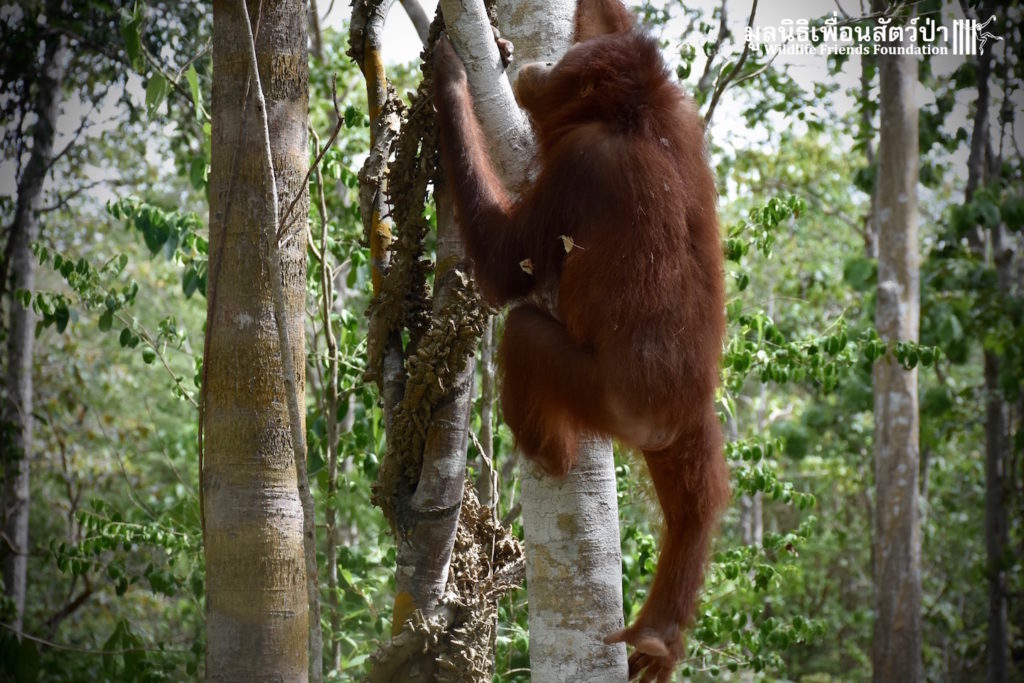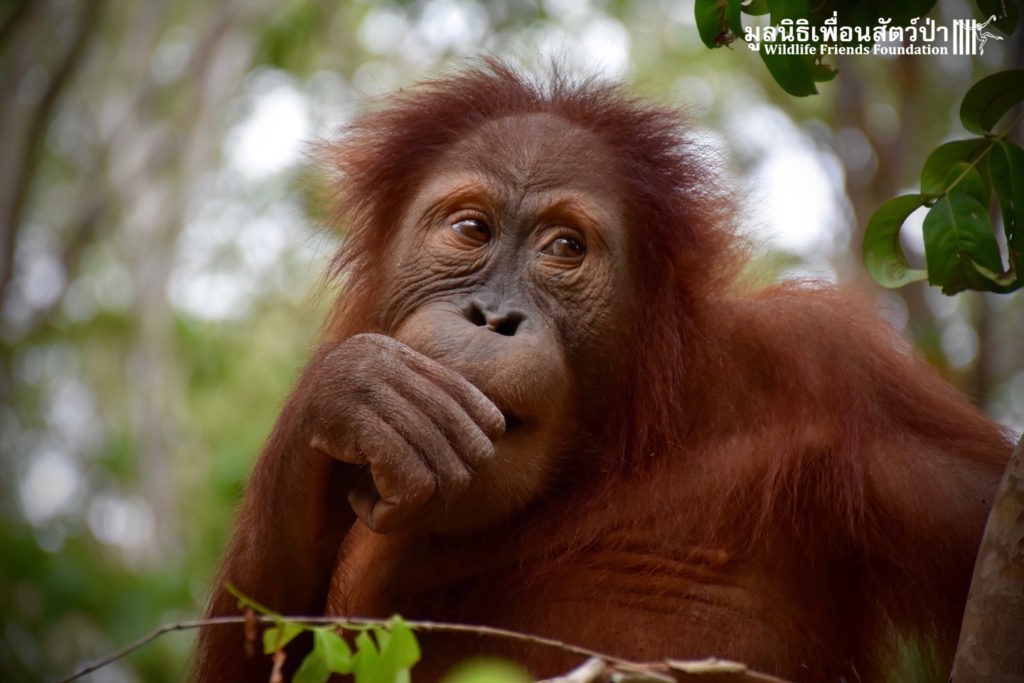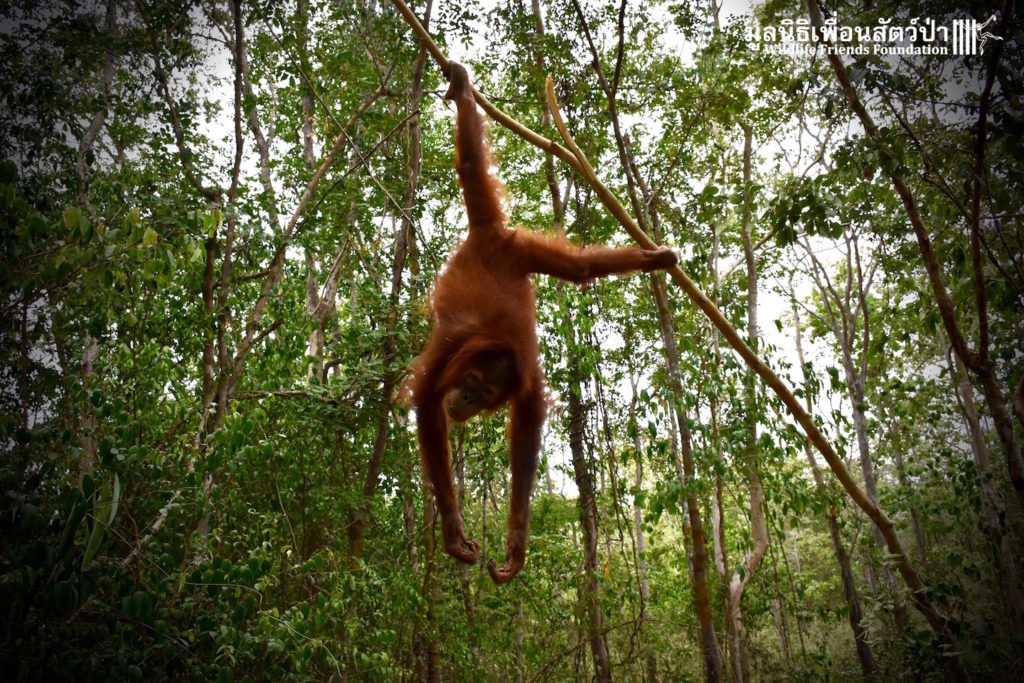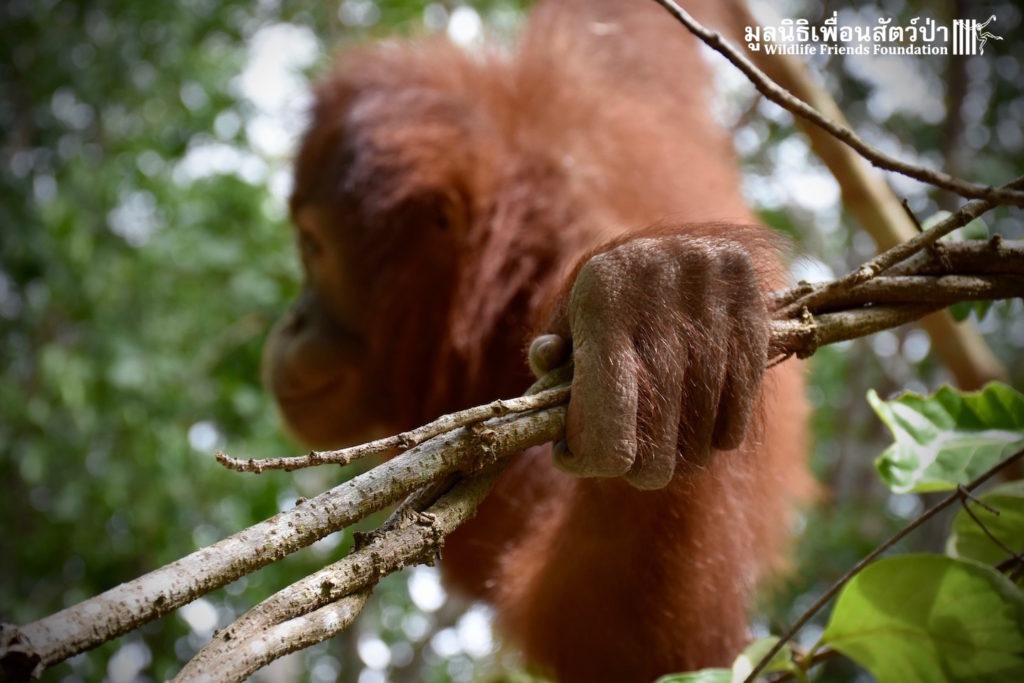A big step forward! An MOU has been signed with the coconut industry and authorities to phase out monkey labour and exploitation in coconut harvesting.
It is International Orangutan Day this Friday!!!
Its International Orangutan Day this Friday!!!
In preparation for this day which is on Friday, here are some images of rescued orangutans, Maggie and Chico here at the WFFT Wildlife Rescue Centre, and their increasingly endangered wild cousins. Each day during their daily forest school sessions they are taken into the natural forests surrounding WFFT, climbing high up in the tree canopy, foraging for natural foods and even nest building are natural behaviors that are observed regularly.
After consulting with various orangutan specialists we have reason to believe that Maggie is actually a Sumatran orangutan not Bornean as we previously thought, this will be confirmed in the coming weeks via DNA-based species identification techniques.
The Sumatran orangutan (Pongo abelii) is listed as Critically Endangered (CR) by the IUCN Red List of Threatened Species. The most recent population estimate for this species is around 7,300. There has been an estimated decline of over 80% in wild population over the last 75 years. This decline continues, as forests within its range are under major threat. Most orangutans are outside of protected areas, including within potential logging areas and conversion forests. This species is seriously threatened by logging (both legal and illegal), wholesale conversion of forest to agricultural land and oil palm plantations, and fragmentation by roads. Animals are also illegally hunted and captured for the international pet trade but this appears to be more a symptom of habitat conversion, as orangutans are killed as pests when they raid fruit crops at the forest edge (The IUCN Red List of Threatened Species: Pongo pygmaeus, 2016).
The Bornean orangutan (Pongo pygmaeus) has been recently reclassified as Critically Endangered (CR) by the IUCN Red List of Threatened Species. The total number of orangutans in Borneo is not precisely known, using modelling techniques and the latest field data, the total population estimate is 104,700 individuals. This represents a decline from an estimated 288,500 individuals in 1973 and is projected to decline further to 47,000 individuals by 2025. Climatic change and human pressures have resulted in significant reductions in the range and numbers of Bornean Orangutans during the recent historic past. The two major reasons why most Bornean Orangutans populations are in sharp decline are destruction, degradation and fragmentation of their habitats, and hunting. During the period 1973–2010, 39% of Bornean forests were lost, it is estimated that a further 37% of suitable orangutan will be converted to plantations between 2010 and 2025. In addition to habitat loss, selective logging has degraded 56% of Bornean Orangutan habitat since 1973. The combined impacts of habitat loss, habitat degradation and illegal hunting equate to an 86% population reduction between 1973 and 2025 which qualifies the species for listing as Critically Endangered (The IUCN Red List of Threatened Species: Pongo pygmaeus, 2016).
For now, Maggie and Chico are safe under the care of the WFFT Team. We plan to build large open enclosures to provide more suitable environments as the progress through to adulthood. We are still looking for people to help out. If you would like to sponsor part of the construction please let us know or donate to www.wfft.org/donate
Chico Arrival – http://bit.ly/2aZsi7N
Maggie Arrival – http://bit.ly/2bFcJHT

